When it comes to walking our dogs, most of us think more about the best collar and/or harness than what leash we might attach to it. And with good reason — not all collars are created equal, and some can actually cause lasting damage to your pup. If you do need helping finding neckwear, check out How to Choose the Right Training Collar or Harness for Your Dog, and then come back to figure out what kind of leash you would like. This decision isn’t quite as involved, but there are a few options out there, so it’s important to know the differences.
Regular leash
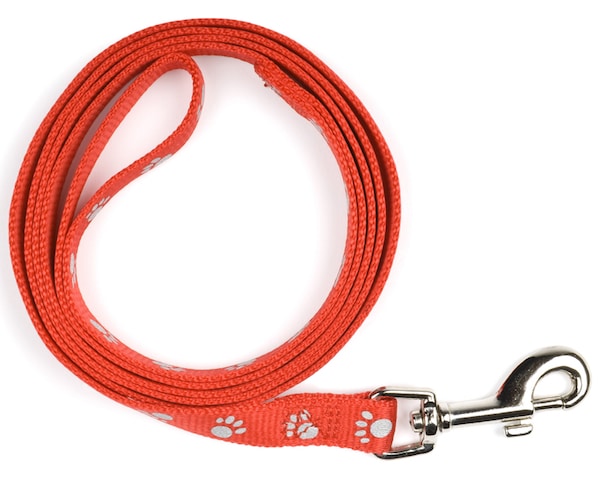
Leash by Shutterstock.
A regular leash is made of nylon webbing, with a clip at one end that attaches to your dog’s collar or harness, and a loop at the other end to make the leash easier for you to hold. They come in all kinds of colors and designs, and are typically about 1 inch wide (though they are available thinner and wider) and are usually 4, 6, or 8 feet long. They are also made of other materials, such as leather or braided cord.
If you have a smaller dog, opt for a thinner leash because a wider one with a heavy clip at the end will weigh them down. Also, a longer leash for a smaller pup and a shorter leash for a bigger dog will allow you to adjust for the height difference between the two of you.
That being said, I typically recommend a standard, 6-foot leash for walking. It’s the easiest to use, the most reliable and durable (unless you have a dog who likes to chew everything), and the easiest to find.
There is another version of this type of leash that has an additional handle about halfway down, which can give you have more control over a stronger dog or allow you to pull your pup closer in crowded situations or when crossing a busy street.
Chain leash
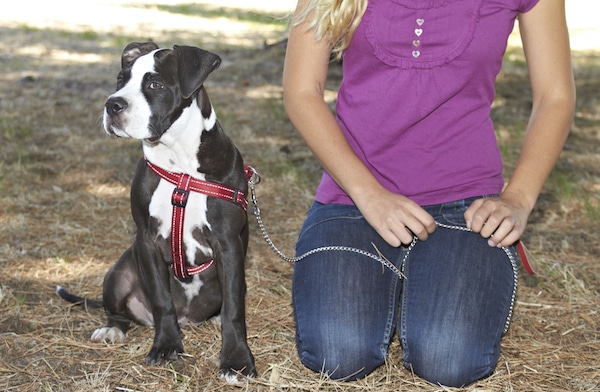
Puppy with chain leash by Shutterstock.
First things first, I am not talking about a chain collar. This is a leash that has a handle like every other leash (usually nylon or leather), and a clip like every other leash to attach it to your dog. It’s just the actual leash is made of chain.
It comes in several lengths, like the regular leash, and is an option for dogs who chew through nylon or leather materials.
Bungee leash
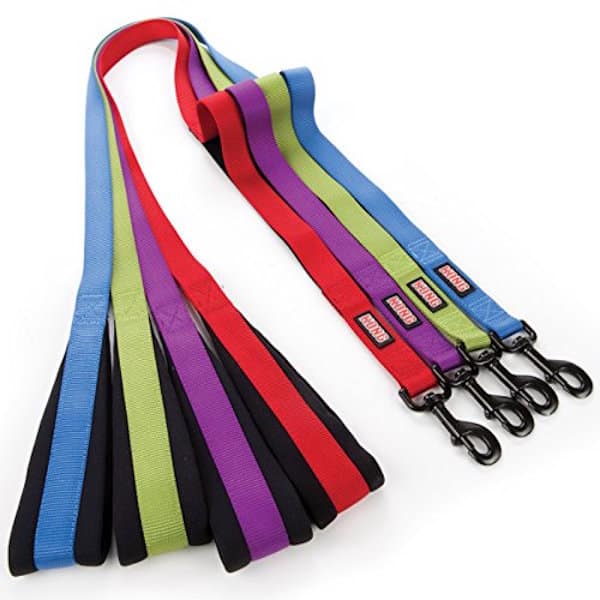
Bungee leash by Kong.
The bungee leash is also similar to the ones above in that it has a handle on one end and a clip on the other. But the material is exactly as the name implies — made out of bungee cord. The bungee is meant to act as a shock absorber if your dog pulls or tries to take off after something.
It’s not a terrible choice, and I can see how it could be beneficial if your dog pulls a little here and there. But the problem is that once your dog gets to the end, there’s no more shock absorption and it will jerk just as much as a regular leash. Also, it could be harder to control your dog or work on loose leash walking because you can’t control the leash as well because of its flexibility. But depending on the brand and how much flexibility it has, this leash could be a good option for a mild to moderate puller.
Retractable leash
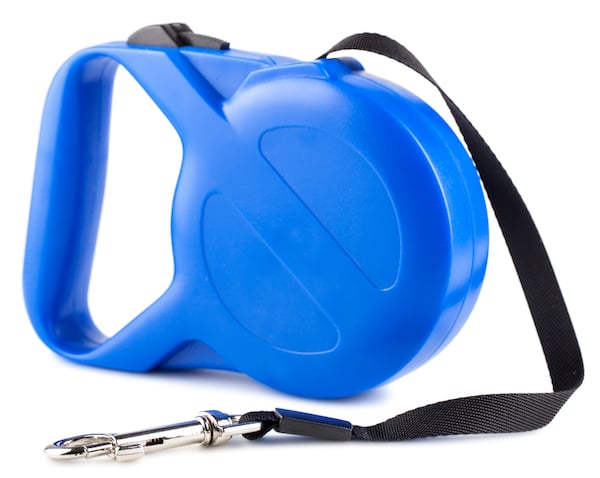
Retractable leash by Shutterstock.
A retractable leash typically has a cord or belt attached to a short section of nylon. The nylon part clips to your dog like a regular leash, and the cord or belt retracts into a plastic handle. You can let the leash out as much as you want, or lock it in the handle with the push of a button. Many of these allow your pup to go anywhere from 10 to 20 feet (or more) away from you.
I know these are popular, and you may even have one at home, but there are many, many reasons why the retractable leash is not a good choice. The leash could break, or your dog could pull the handle out of your hand. Or your pup could get too far out and get into trouble with another dog, run into the street and get hit by a car, or twist you up in the leash and cause some pretty serious burns and cuts from the belt or cord (trust me, it’s not pretty).
Slip lead leash
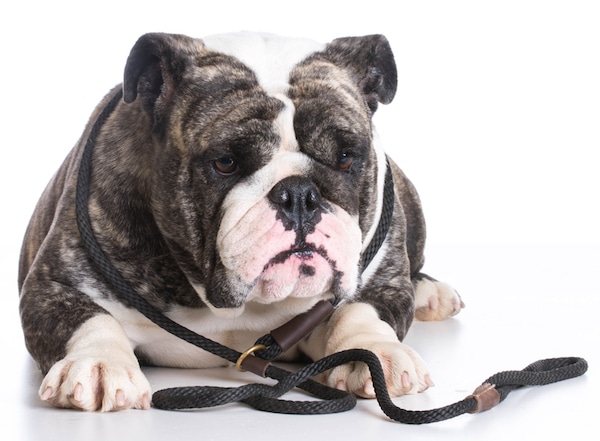
Bulldog with slip lead leash by Shutterstock.
A slip lead is what you typically see at the vet’s office or at an animal shelter, where they need to move dogs who are not wearing a collar. Fancy slip leads are also used for showing. They are usually a nylon leash (though can be made from cord or other materials) that slips through a ring to create a loop, which goes around the neck. It’s much like a choke collar, with nothing to stop it from tightening too much around neck, which can be harmful to your pup’s throat.
This leash can be a helpful backup if your dog has been known to slip out of their collar. In that case, put it loosely around the neck and hold it with the regular leash, then it will tighten if your dog slips out. I also carry one in my car in case I ever need to help a stray dog. Beyond that, there is no reason why someone should try to walk their dog regularly on this type of leash.
Long-line leash
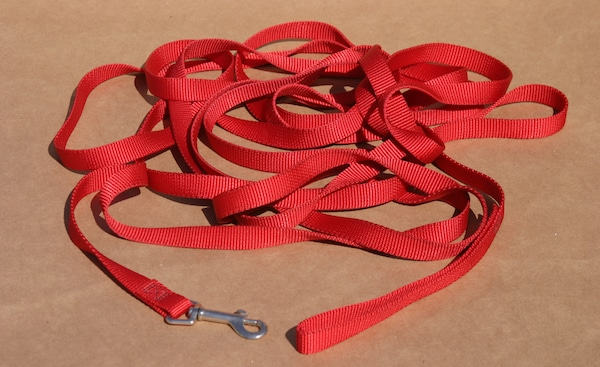
Long line leash by Shutterstock.
A long line is less leash, more training tool, but I thought it was worth including. A long line is essentially a really long (usually 20 to 50 feet) nylon leash. It’s typically about 1 inch thick, and has a clip on one end for your dog and a loop on the other end for your hand.
The long line is a great tool for teaching your dog to come when called. Keeping the long line short, walk your dog to a local park or open space. Then let the leash out so that your dog can get some distance from you. (Start with 10 feet, and then gradually work your way up to the full length.) After letting your dog out a bit, call their name. If they come when called, great! Have a happy party!
If they ignore you, don’t use the leash to pull them in, but use it to move yourself closer. Go close enough that they notice you and start to come, or that you know they will come if you call again. No matter how long it takes, act happy when your dog comes to you. If they consider coming to you a happy event (vs. getting into trouble), they are more likely to do it when you call.
Tie-out leash
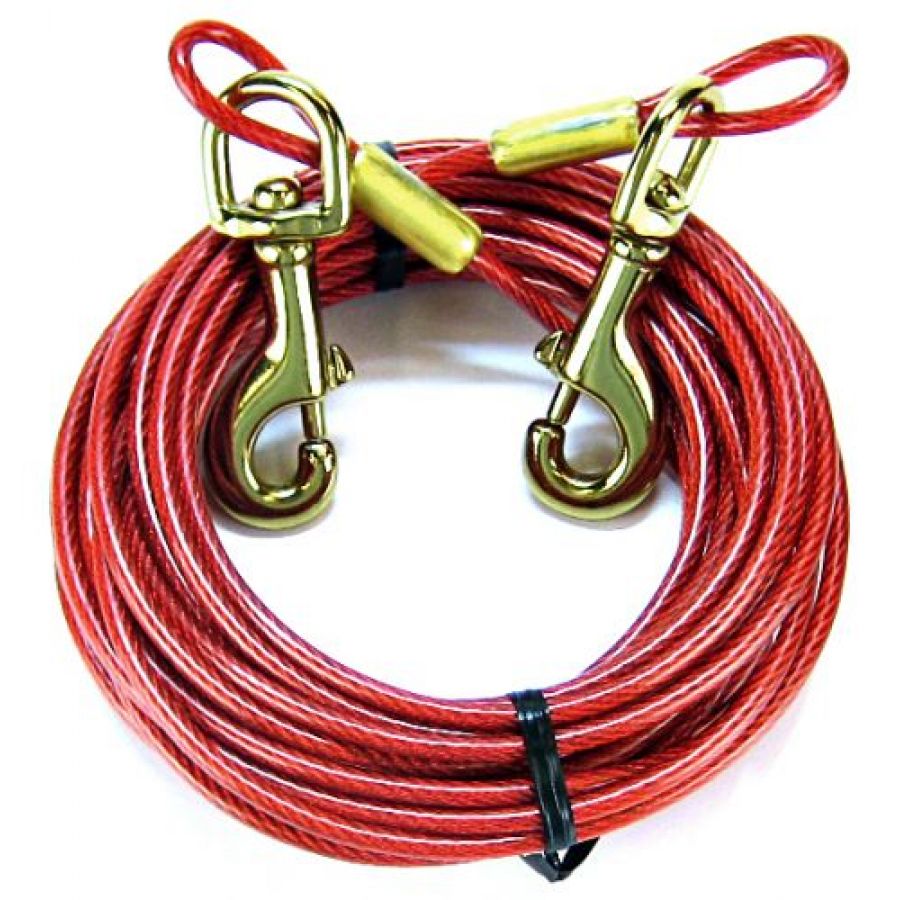
Tie-out leash Pet Mountain.
A tie-out, which is typically a cable with clips on both ends, should never be used for walking your dog. I don’t think they should be used at all without supervision, but certainly not for walking. They aren’t designed for walking your dog and can cause injuries similar to the retractable leash.
Clips
You may not think much about the clips at the ends of these leashes, and most of them come with the standard bolt-snap clip in many of the pictures above. It’s reliable and easy to use, but over time the spring that opens the clip could wear out so that it doesn’t close all the way. So keep an eye on it as the leash gets older to make sure the clip still works properly.
Another clip is the trigger-snap clip. It’s typically a bit bigger than the bolt-snap clip, and can be more reliable because of its design. The clip part typically opens inward, which makes it less likely to open if pulling puts pressure on the gate.
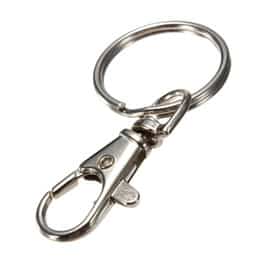
Photo courtesy DHGate.com.
You should never use the following clips on your dog’s leash — they may stay closed at first, but the slightest pulling could pop them right open:
Spring hook/spring wire gate-snap hook
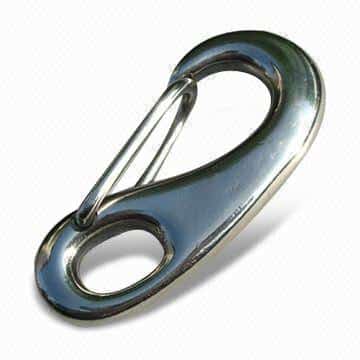
Photo courtesy PetsGlobal.com.
Lobster claw bolt-snap hooks
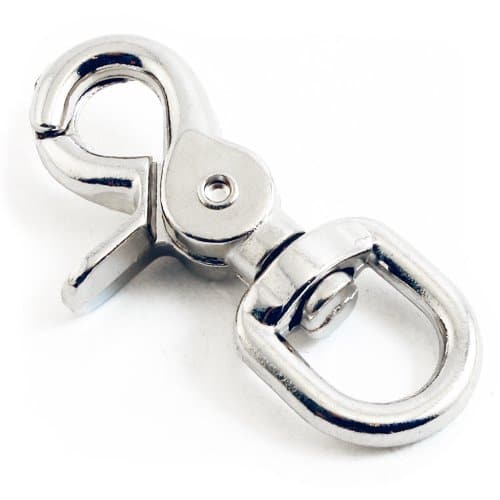
Photo courtesy Amazon.
The post How to Choose the Best Leash for Your Dog appeared first on Dogster.
No comments:
Post a Comment